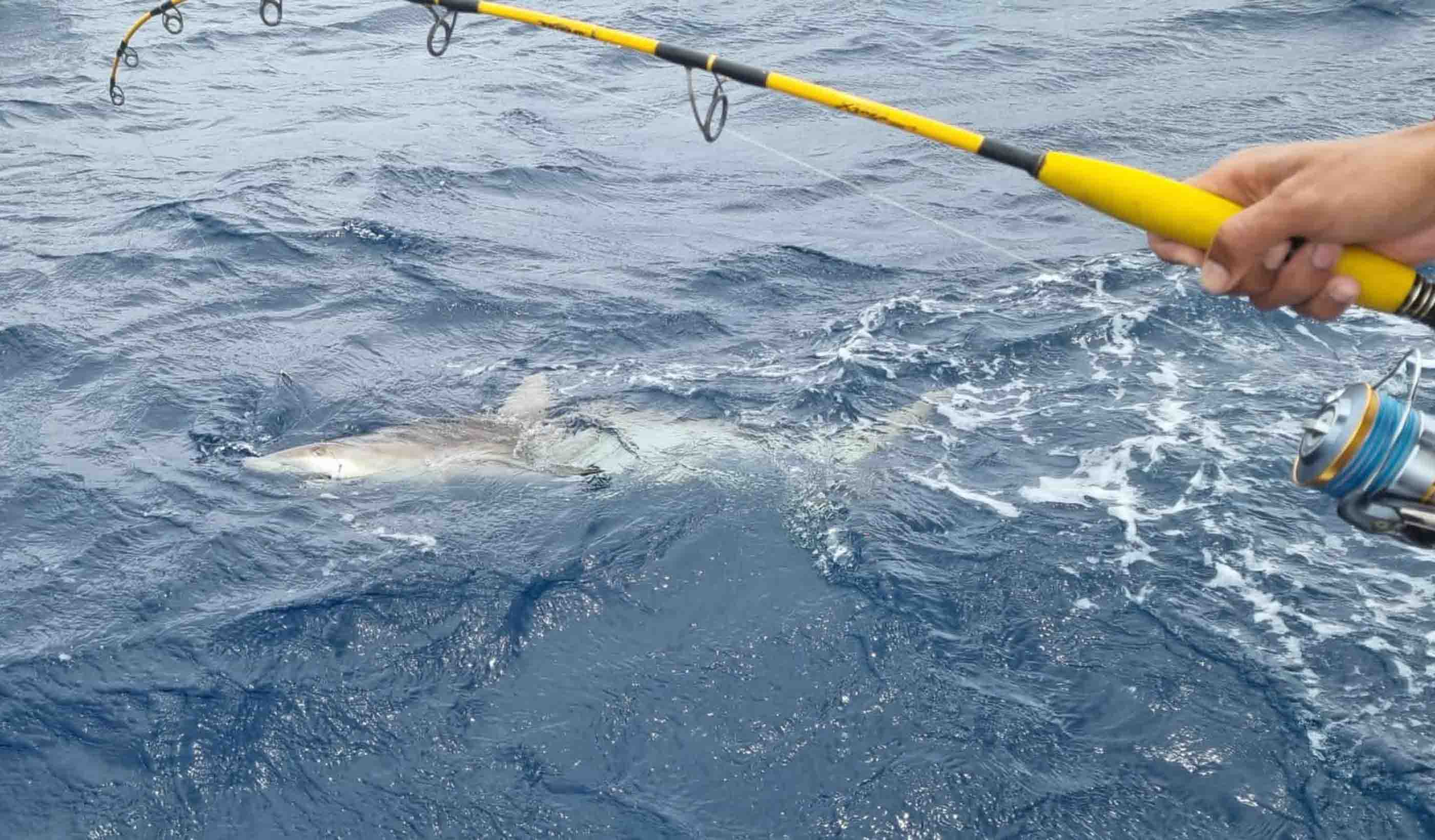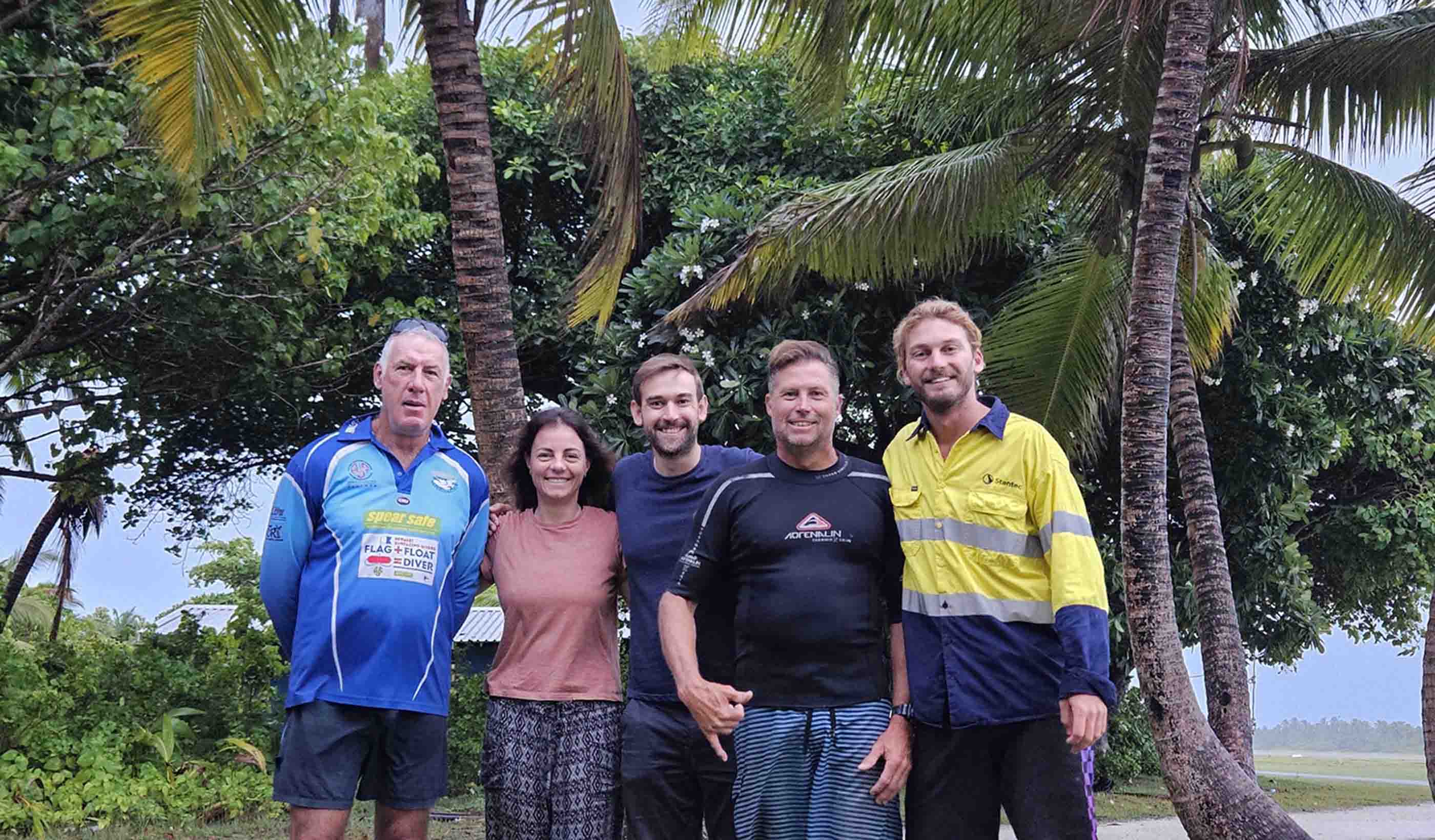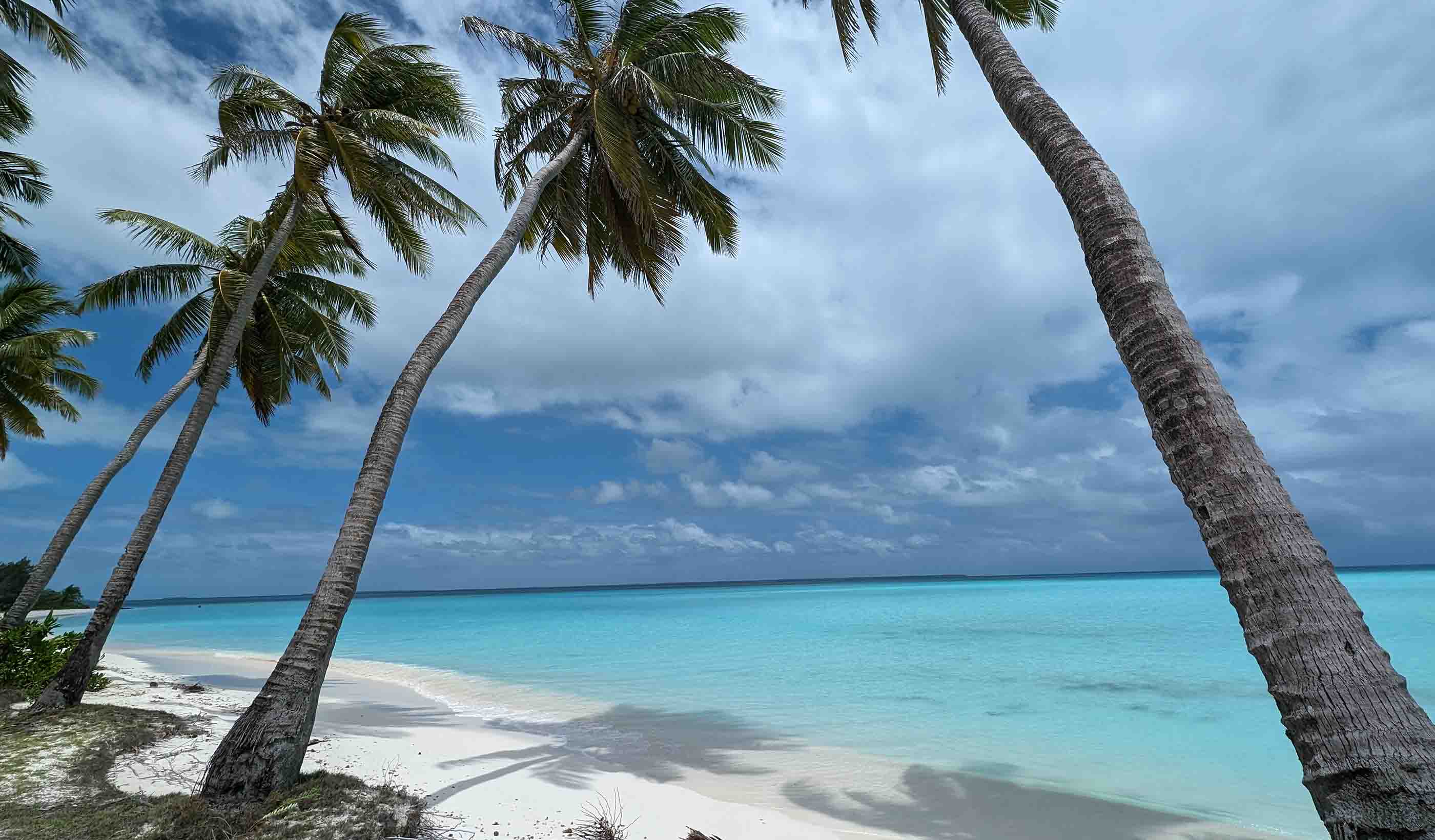Reducing shark depredation to support Cocos Islands economy and Australian marine ecology
July 18, 2024
July 18, 2024
Using shark-deterrent technology helps prevent fish mortality and support the local economy on Cocos (Keeling) Islands
We love our jobs. In May, Dylan spent three weeks on the beautiful, tiny Cocos (Keeling) Islands off the Western Australian coast. There he helped test shark-deterrent technology to combat shark depredation—this is when sharks eat fish off of fishing lines before the fish are reeled in. The Cocos Islands community is highly reliant on artisanal fishing. But their healthy shark populations are affecting the supply of fish to the local community, commercial fishing in the area, and tourism (game fishing).
With sharks taking a proportion of hooked fish, fishers need to catch more fish to reach their target quantities. Given this extra fishing effort, shark depredation is indirectly causing high and, if left unchecked, potentially unsustainable fishing pressure on target fish species. It’s also creating socio-economic impacts for fishers and the local community, including expensive loss of catch and fishing gear, reduced food security, and shark population management tactics.

A grey reef shark attempting to steal a fish off the line.
Sharks are a vital component of the marine food web. They keep populations of fish prey in check, balancing the ocean’s food web and preventing knock-on effects down the food chain. Sharks must be protected from unnecessary threats such as unsustainable commercial shark fishing and shark population management tactics. And many species of large sharks—including those that depredate at Cocos—reproduce slowly, meaning that local populations are at risk of “crashing” if mortality exceeds birthrate. Because of these impacts, we need to find nonlethal tactics to deal with sharks.
Shark depredation comes with a global economic and ecological cost too. Anecdotal reports suggest that shark depredation has increased over the last 10 to 20 years. The rates of shark depredation varied from around 1 percent to 26 percent in commercial and recreational fisheries worldwide. Here in Australia, there was an 11.5 to 13.7 percent depredation rate for ground fishing in the Ningaloo Marine Park. Fishers are changing their fishing practices to reduce or avoid shark depredation.
Teaming up with researchers from the lead agency—the University of Western Australia (UWA)—we worked closely with community fishers and charter boats to test a shark-deterrent technology. The device attaches to a fishing line and emits an electromagnetic field to overload the sharks’ highly sensitive electro-sensory system. It should cause them to stay away from the catch. At the same time, the LED light on the device attracts fish.

The Cocos (Keeling) Islands research team, from left: associate professor Adam Smith, Reef Ecologic; Dr. Victoria Camilieri-Asch, University of Western Australia (UWA); Dr. Jonathan Mitchell, UWA; David Smith, RPELX; and Dylan Skilton, Stantec.
We used various important local fish species to collect data to test the effectiveness of the shark-depredation deterrent on fish and gear loss to sharks while fishing. We also reviewed the practicality of using the device during different types of local fishing, both artisanal and charter boat operations.
The results? Success. The proportion of hooked fish depredated by sharks without the deterrent attached was 86 percent, whereas shark depredation with the device attached was only 24 percent. This represents a reduction in depredation of 72 percent. The deterrent also helped minimize loss of fishing gear, such as hooks and sinkers. Naturally, less fishing gear in the marine environment is cleaner and safer for marine ecology.
The device attaches to a fishing line and emits an electromagnetic field to overload the sharks’ highly sensitive electro-sensory system.
The device we tested was primarily developed for surfing and other recreational activities and attached to watercraft, but the technology has been adapted for fishing and is being sold as a shark-management tool. However, there isn’t much literature on the device’s true effectiveness for that task. Our job was to answer the question: does the new application work for reducing shark depredation?
Based on the developer’s claims, we expected the device would reduce the percentage of hooked fish taken by sharks by at least 50 percent when deployed and turned on. It would mean the device was effective and working as intended. And that would be a win for Australian marine and coastal ecology, for fisheries and tourism, and for proponents of environmentally sustainable progress.
Fish are a vital food source for the people of the Cocos Islands, but supplies have been impacted due to sharks eating hooked fish. Find out how Stantec used shark-deterrent technology to help solve the issue.
Technologies need to be formally tested to provide scientific evidence to back up any claims that the technology works in the way developers and manufacturers say it does. A rigorous and scientifically defensible experimental design is crucial in providing that evidence. The research team used three fishing line setups and tested them against each other.
The artisanal and charter boat fishers in the study used rod and line at fisher-selected sites. We observed them during their normal fishing activities over two weeks. The researchers statistically compared the mean rates of shark depredation per hooked fish among the three treatments.
Overall, the tool greatly reduced shark depredation. Plus, fishers had a better experience and were able to land good fish, even in “sharky” locations they’d usually avoid.

The Cocos (Keeling) Islands are off the Western Australia coast.
Shark depredation is not unique to the Cocos Islands. Depredation causes a great cost to the global economy and can cause negative human-shark interactions. This research into the shark-deterrent technology found that its usefulness in reducing shark depredation offers a better shark-management option for artisanal and commercial fishers, who have typically used their own measures to stop sharks from eating their catch.
Instead, by effectively deterring sharks, they hunt for their own food. This helps keep sharks’ prey populations in check, balance the ocean’s food web, and prevent shark populations from “crashing”. Local fishing communities are benefitting too, because they have increased food security and other socioeconomic benefits, and aren’t spending money replacing lost, expensive fishing gear due to shark depredation.
This research was funded by Parks Australia and the grant focused on managing the Cocos (Keeling) Islands Marine Park. The University of Western Australia was the lead agency and teamed up with Stantec, Sea Country Solutions, and Reef Ecologic. They worked closely with community group Cocos Marine Care, local fishers, and charter boat operators to test the RPELX device.